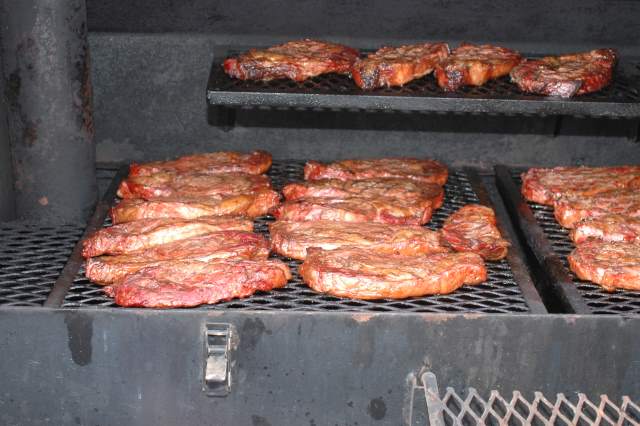Basic demand drivers still provide the most opportunity
May 13, 2015

Cow-calf producers are becoming more comfortable with industry structure and how value-added business is conducted. At least that’s what digging into the data from BEEF magazine’s annual State of the Industry survey (SOI) tells us. Scott Grau, Penton Agriculture’s senior research manager, compiled a multi-year analysis of the annual SOI data going back to 2010. You can find specific results from the most recent study in the upcoming June issue of BEEF.
According to the multi-year analysis, 14% of this year’s respondents cited concentration and consolidation in the feedlot and packing sectors as a major concern. It was a major concern of 24% in 2010.
Similarly, 5% more respondents were in favor of global trade (26% total) this year than six years ago. Half as many are less in favor of it year-over-year (7%) than in 2010.
Of course, the SOI multi-year compilation also offers some head-scratchers.
This year, for instance, the fewest respondents in six years (38%) say they managed and sold any calves, feeder cattle or fed cattle in the last year with the notion of making them eligible for value-added programs such as natural, NHTC, age-verified, premium quality and whatnot. That’s 8% fewer than three years ago.
Yet, an estimated 80% of fed cattle will trade outside the spot cash market this year, which infers they will have the opportunity to be valued for individual performance.
By all counts, branded beef continues to comprise a larger share of the offering to consumers, too.
According to a recent study at Oklahoma State University, “Retail and Foodservice Marketing Trends for Beef,” (Harsh, Overbeke), 43% of 91 branded beef programs in 2013 had specifications for USDA Choice or Prime.
“In general, the demand for branded beef has outpaced commodity Choice beef. Branded boxed beef sales have taken a greater percentage of the total wholesale beef total and has doubled since 2003 (Speer, 2013),” according to the study.

70+ photos showcasing all types of cattle nutrition
Readers share their favorite photos of cattle grazing or steers bellied up to the feedbunk. See reader favorite nutrition photos here.
Incidentally, branded or not, the most credible numbers I can find peg non-conventional beef (natural, organic or grass-fed) at no more than 6% or 7% of the total annual market.
A combination of reasons could account for the apparent paradox of this reality and the SOI trend: program evolution; increased prices for all levels of quality and management as supplies tightened; genetics and management aimed at premium quality becoming enmeshed within the operation, rather than a decision demanding altered management.
Pondering the SOI response got me to thinking about specific demand drivers that are part of some brands. That got me to remembering the study conducted for the beef checkoff a few years back. “Beef Demand: Recent Determinants and Future Drivers” summarized current knowledge of consumer demand for beef and made recommendations of the industry’s best opportunities to positively influence beef demand. Agricultural economists at Kansas State University (Schroeder, Tonsor) and Purdue University (Mintert) conducted the study.
Researchers placed potential demand drivers into seven broad demand categories: price, product quality and form, nutrition, health, food safety, social aspects and sustainable aspects. They ranked the importance of each based on previous preference studies, as well as consumer and expert surveys regarding ground beef and steak separately.
In every case but one, food safety, price and product quality ranked highest for importance, not necessarily in that order. Toss in the health category and these ranked in the top four every time.
Subscribe now to Cow-Calf Weekly to get the latest industry research and information in your inbox every Friday!
Conversely, the broad categories of sustainability and social aspects ranked at the bottom of the list in every case but one. Throw in the nutrition category and these were the least important on every list.
Examples of social aspects include specific drivers like animal welfare, natural and organic, locally grown, country of origin labeling and the like. Examples in the sustainability category include attributes such as environment, efficiency and profitability.
So, on the one hand, consumers vote with their dollars based on price, product safety and product quality. As an industry, though, it seems like we spend an increasing amount of time haggling with advocacy groups over things that consumers are least concerned about.
“…Social aspects and sustainability are consistently among the lowest ranked demand shifters, across all information sources,” say the study authors. “These factors are receiving considerable attention in the news, they have captured a large proportion of recent research interest, they are high in the list of public policy debates, and they have become a focus of attention within the beef industry.
“Yet, despite all this attention, these factors are not currently important aggregate demand shifters. Although our research does not indicate these issues are unimportant, in part because ignoring them could result in substantial cost burdens being placed upon the industry, the take-home message is investing the industry’s limited resources into shifting consumer demand by boosting beef’s social or sustainability product attributes is not likely to noticeably enhance aggregate beef demand.”
Again, that’s not saying that the industry should ignore consumer concerns or desires when it comes to those things that reside beneath the umbrellas of sustainability and social aspects. But it underscores the dichotomy between perceived, collective consumer voice and action. It also serves as a reminder of how easily the proverbial tail can begin to wag the mutt.
You might also like:
5 management steps to boost calf performance & profit
Don't bid away future profits by overpaying for cows
When you should castrate beef calves
You May Also Like


.png?width=300&auto=webp&quality=80&disable=upscale)
